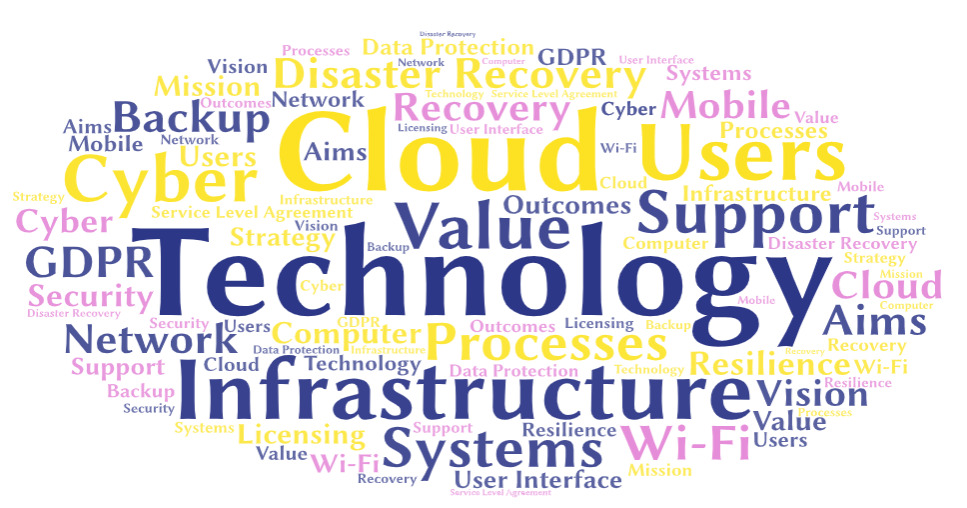
I have previously written in relation to the large number of support calls received by IT departments in schools especially towards the start of the new academic year. A significant portion of these calls relate to users forgetting how to do something using technology, with a number of these relating to what I would consider simple issues. Using Windows+P for example is a common solution to the common problem of computer displays not showing on classroom projectors, instead showing only on the desktop monitor. But should IT teams still need to deal with such simplistic issues in a world where Google can quickly serve up the answers?
Self Sufficiency vs. ease
I suspect one of the challenges here is simply ease. With a good IT support team, a simple issue can be quickly solved with an email or a phone call, with little effort on the part of the user. This ease of solutions, with every occurrence, reinforces that this approach is the easiest, most convenient and therefore the correct and preferable approach (for the user at least!).
A preferable solution viewed either from the long-term point of view or from that of busy IT support teams, is that users be able to fend for themselves, that they are willing and able to make use of Google to find solutions to their own problems. Again, if this was to become the common approach, it would eventually reinforce itself as the best approach. In doing so users would become more self-sufficient and resilient to issues, while IT support teams would be freed up to deal with the issues which are more technical in nature or cannot be solved through a simple Google search. This always reminds me of the teaching approach used in primary schools of “C3B4ME” or see 3 before me, which encourages students to ask friends, search the internet, read books, and generally consult 3 sources before approaching the teacher in relation to a problem or challenge.
Part of the challenge in the above may relate to the cognitively demanding nature of teaching. A teacher is considering content knowledge, pedagogical knowledge, the individual traits, and behaviours of each of their students, assessment (formative and summative), timekeeping and many more things in a lesson, so if the cognitive load can be reduced a little by fielding IT issues to IT support, I can see why this may occur.
Usability
I also think it’s important to acknowledge how system and app usability has changed over the years. When I first started using IT most products, including productivity software and even games, came with detailed instruction manuals. Now I will admit to not reading these and instead jumping straight it, which is how I suspect most people would have operated, but when you hit issues you had something to refer to as this was therefore you first port of call. These days more consideration has been given to usability making the learning curve for many apps shallower than it may have been in the past. Detailed instruction manuals are no longer provided as solutions are more “usable”. This seems like a good thing, so why do IT support teams still get so many calls?
The general perception of usability is correct in general terms, but when looking at specific solutions in schools it may not hold. So, a user might have been able to work out TikTok and Facebook on their own with no help but when they hit the schools management information systems (MIS) they struggle. The MIS is then saw as highly specialised, which to an extent it is, so this merits a call to IT support rather than a look at the help tools or a Google search.
What are IT Services for?
The other question I have in relation to this issue is, if users do become more self sufficient and solve more of their own problems, what does this mean IT Services teams will be doing? As I mentioned earlier, I believe they would simply be freed up to focus on more technical issues which can’t be easily solved through the support of Google. I also think the extra time available would also allow them to spend more time looking at how to better use technology, rather than simply repeating the same solutions to repeatedly occurring simple issues.
Conclusion
The challenge for IT teams of encouraging user self sufficiency while still being helpful and user focussed is an ongoing and long-term challenge. Human habit, ease and user confidence are all wrapped up in this, making the challenge very much a human rather than technological challenge. This is an important consideration and to me highlights the need to focus on a longer-term plan and the little day to day actions, including the potential to “nudge” behaviours towards the intended outcome of improving users technological self-sufficiency.
Ultimately IT teams in schools want to see technology used to maximum impact. I think developing user self-sufficiency in relation to technology, and likely user confidence as associated with self-sufficiency, will help us better achieve this.








 As we use more and more cloud services, internet access and school internet provision becomes critically important. Due to the critical nature of internet access, when looking at Internet service provision, firewalls and core switches, the two main focal areas I would consider are doubling up where finances allow or carefully examining the service level agreement along with any penalties proposed for where service levels are not met. In the case of firewalls and core switches, cold spares with a lower specification may also be an option to minimize cost but allow for quick recovery in the event of any issue. When looking at the SLAs of providers in terms of their support offering for when things go wrong consider, is it next business day on-site support or return to base for example and how long their anticipated recovery period is.
As we use more and more cloud services, internet access and school internet provision becomes critically important. Due to the critical nature of internet access, when looking at Internet service provision, firewalls and core switches, the two main focal areas I would consider are doubling up where finances allow or carefully examining the service level agreement along with any penalties proposed for where service levels are not met. In the case of firewalls and core switches, cold spares with a lower specification may also be an option to minimize cost but allow for quick recovery in the event of any issue. When looking at the SLAs of providers in terms of their support offering for when things go wrong consider, is it next business day on-site support or return to base for example and how long their anticipated recovery period is. In the case of edge switches and Wi-Fi Access Points we are likely to have large numbers especially for larger sites. I would suggest that heat mapping for Wi-Fi is key at the outset of a Wi-Fi deployment, in making sure Wi-Fi will work across the site. In looking at resiliency for when things go wrong my view is an N+1 approach. This involves establishing a spare or quantity of spares based on the total number of units in use and the level of risk which is deemed acceptable. High levels of risk acceptance mean fewer spares, whereas a low level of risk acceptance may lead to a greater number of spares.
In the case of edge switches and Wi-Fi Access Points we are likely to have large numbers especially for larger sites. I would suggest that heat mapping for Wi-Fi is key at the outset of a Wi-Fi deployment, in making sure Wi-Fi will work across the site. In looking at resiliency for when things go wrong my view is an N+1 approach. This involves establishing a spare or quantity of spares based on the total number of units in use and the level of risk which is deemed acceptable. High levels of risk acceptance mean fewer spares, whereas a low level of risk acceptance may lead to a greater number of spares. Cables break plus various small animals love to chew on cables given half a chance.
Cables break plus various small animals love to chew on cables given half a chance. I have been planning to post on IT strategy in relation to some of the areas which I believe need to be considered. Initially my thought was for a single post covering a number of different points, some being obvious and some less so obvious, however as soon as I started writing it became clear that each point could be a post in itself or would result in a really long single post. As such I decided to undertake a number of separate posts of which this is the first:
I have been planning to post on IT strategy in relation to some of the areas which I believe need to be considered. Initially my thought was for a single post covering a number of different points, some being obvious and some less so obvious, however as soon as I started writing it became clear that each point could be a post in itself or would result in a really long single post. As such I decided to undertake a number of separate posts of which this is the first: I remember someone telling me that IT is the 3rd most expensive thing in a school after staffing costs and the cost of the building and school estate. With such a large part of a schools finances invested in technology it is important to make sure that we are getting value. Now I note my use of the word “value” as opposed to impact; This is due to impact being often associated with examination outcomes. In my view this is a narrow view on technologies potential within education. Exam results, for example, don’t provide a measure of the positive effect which technology can have to a student with Asperger’s who previously found it difficult to interact with the classroom discussion but now can do so easily via an online chat facility. For me value suggests a broader classification which might include using technology to engage a particular student who previously wouldn’t or couldn’t access learning, like in the above example, it might include introducing new experiences to students which were either difficult, dangerous or costly without tech or it might be using technology to bring about new more efficient processes for teachers such as dictation of feedback, etc. Value is much more diverse and also context specific than exam results. Seeking value in our technology should be a key objective in all technology decision making but mustn’t be confused with cost cutting.
I remember someone telling me that IT is the 3rd most expensive thing in a school after staffing costs and the cost of the building and school estate. With such a large part of a schools finances invested in technology it is important to make sure that we are getting value. Now I note my use of the word “value” as opposed to impact; This is due to impact being often associated with examination outcomes. In my view this is a narrow view on technologies potential within education. Exam results, for example, don’t provide a measure of the positive effect which technology can have to a student with Asperger’s who previously found it difficult to interact with the classroom discussion but now can do so easily via an online chat facility. For me value suggests a broader classification which might include using technology to engage a particular student who previously wouldn’t or couldn’t access learning, like in the above example, it might include introducing new experiences to students which were either difficult, dangerous or costly without tech or it might be using technology to bring about new more efficient processes for teachers such as dictation of feedback, etc. Value is much more diverse and also context specific than exam results. Seeking value in our technology should be a key objective in all technology decision making but mustn’t be confused with cost cutting.